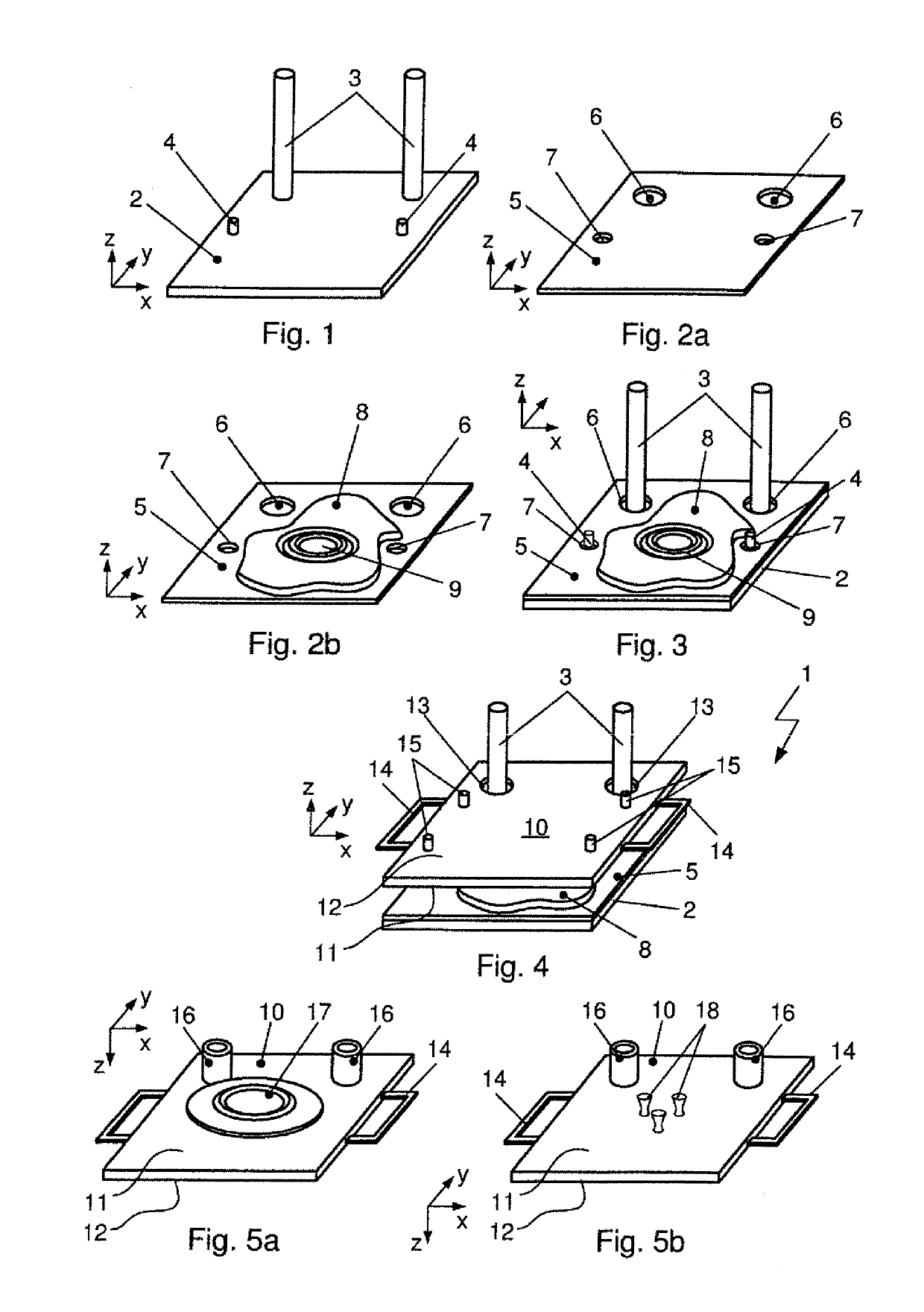Device and method for coating objects
a technology for objects and devices, applied in the direction of liquid surface applicators, spraying apparatuses, coatings, etc., can solve the problems of object clattering or falling off the ground, object slipping on the base, object scratching on the surface of the base, etc., to achieve minimal energy consumption, easy handling and operation, and low cost
- Summary
- Abstract
- Description
- Claims
- Application Information
AI Technical Summary
Benefits of technology
Problems solved by technology
Method used
Image
Examples
Embodiment Construction
[0053]FIG. 1-5 show the device 1 for coating an object 17 with each of the components base element 2, adapter element 5, cast 9 and support element 10.
[0054]FIG. 1 shows the base element 2 of the device 1 for arranging objects 17 for a coating system showing guide means 3 and locking means 4.
[0055]The base element 2 configured as a level plate, in the plane direction x, y has a rectangular surface and in depth direction z a thickness. The guide means 3 are arranged in a peripheral zone of the rectangular base element 2 with directions x, y on one level, that is, in the area of a first lateral edge of the surface. The cylindrical, especially circular cylindrical guide elements 3 project in direction z of the base element and are thus oriented vertical to the base element 2.
[0056]The locking means 4, similar to the guide means 3 are configured in direction z projecting from base element 2. The locking means 4 are arranged in the areas of opposite side edges.
[0057]FIG. 2a shows the ada...
PUM
 Login to View More
Login to View More Abstract
Description
Claims
Application Information
 Login to View More
Login to View More - R&D
- Intellectual Property
- Life Sciences
- Materials
- Tech Scout
- Unparalleled Data Quality
- Higher Quality Content
- 60% Fewer Hallucinations
Browse by: Latest US Patents, China's latest patents, Technical Efficacy Thesaurus, Application Domain, Technology Topic, Popular Technical Reports.
© 2025 PatSnap. All rights reserved.Legal|Privacy policy|Modern Slavery Act Transparency Statement|Sitemap|About US| Contact US: help@patsnap.com

